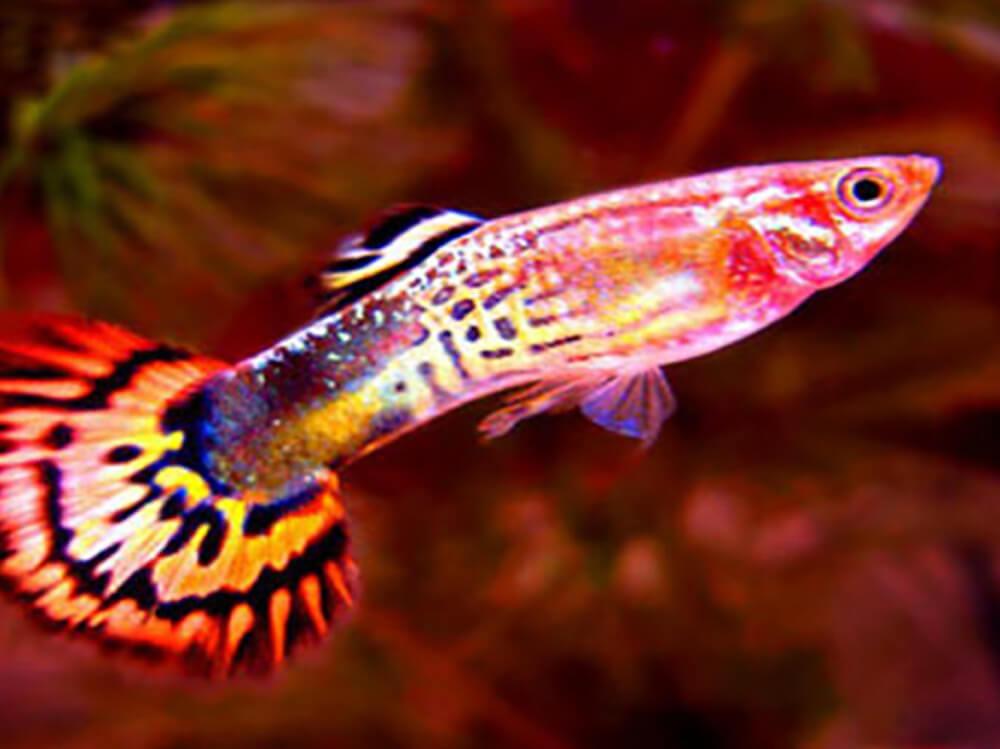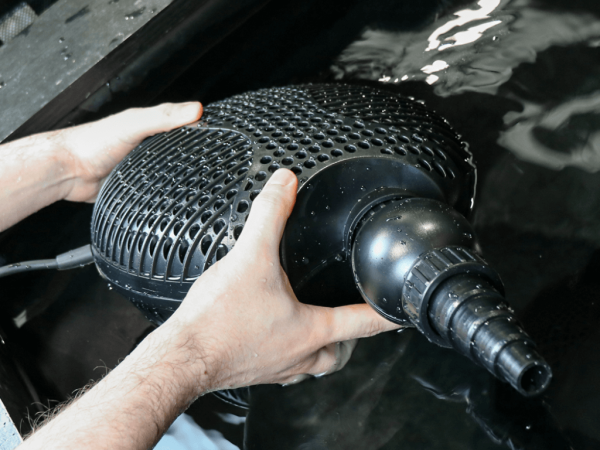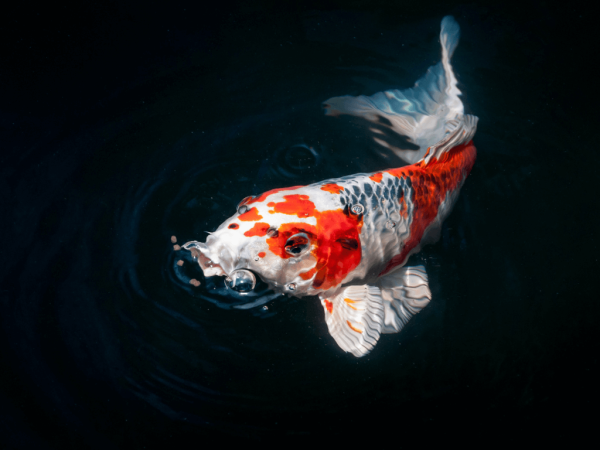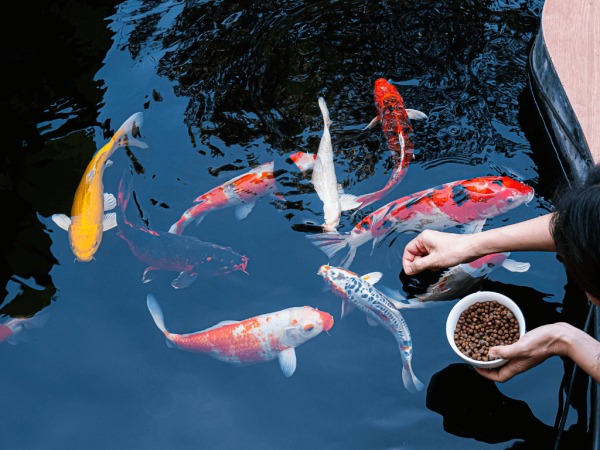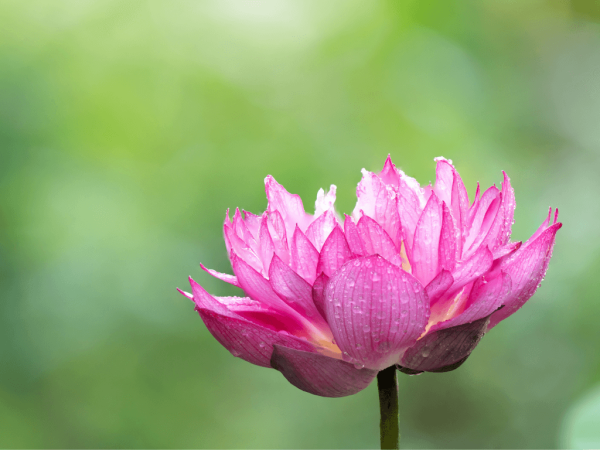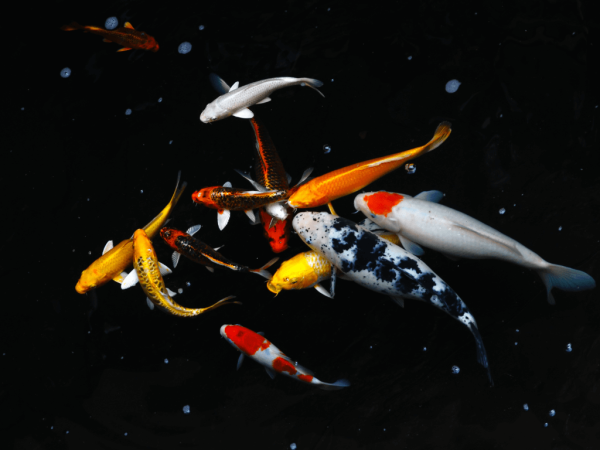What you need to know about livebearers
Livebearing fish are some of the most popular tropical aquarium fish of all time and include guppies, platies, mollies and swordtails.
They are so-called because the females give birth to live young, instead of laying eggs like other freshwater fish species. This is an effective survival strategy in the wild, as livebearer fry are born larger than those hatching from tiny eggs and more able to feed on a wider variety of foods, and better equipped to escape predators.
Not having to lay eggs works for the adults too as they don’t form pairs or have to protect eggs and stay in one place like some cichlids do, or waste energy producing thousands of eggs (like barbs,) the majority of which are eaten before they even hatch. The technical name for giving birth to live young is viviparous.
Pregnant females (also known as gravid,) can swim, eat and travel just as she would normally. She just pauses, gives birth to about 30 large free swimming fry into some plant cover, then goes on about her normal day. Because it’s so effective, livebearing fish are prolific breeders, literally capable of breeding much faster than rabbits. Guppies even have another name - millions fish - because of the speed at which they can reproduce and populate a body of water.
In their native waters of Southern North America, Central America and Northern South America, livebearers are the most successful small fish family in fresh and brackish waters. The Mosquito fish, Gambusia affinis, is so-called because of its effectiveness at controlling mosquito larvae population in freshwater. They are deliberately introduced in some places to help stop the spread of Malaria, while feral populations of guppies are present in most of the tropical countries around the world, sometimes to control mosquitoes but sometimes as escapees from the aquarium industry.
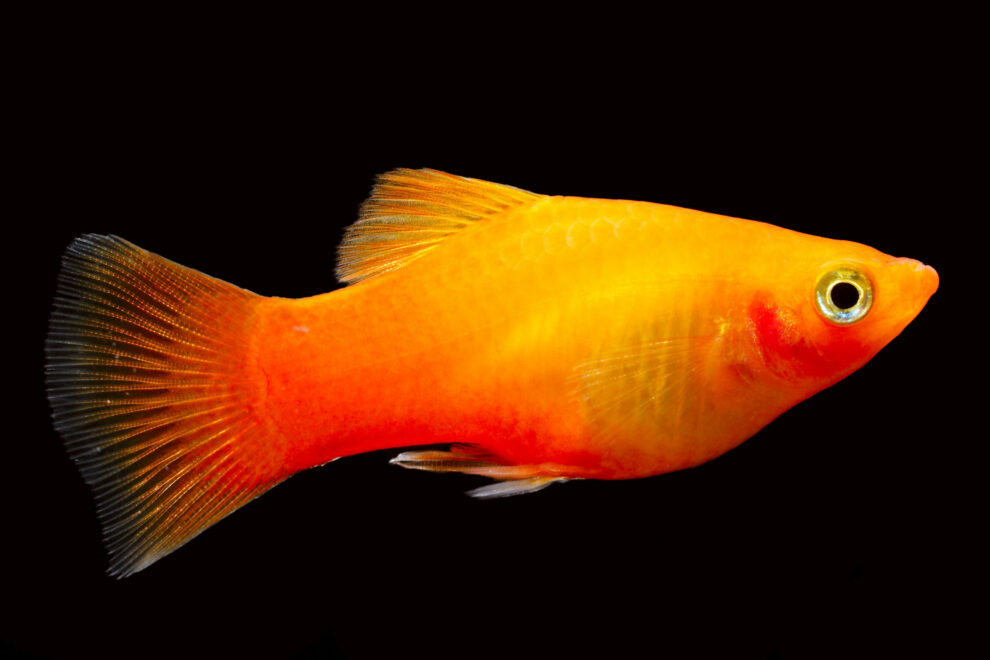
Available species
Guppies, platies, mollies and swordtails are available in hundreds of different colour varieties, though they are often more subtly coloured in the wild. Males also come in many different tail forms, with the more unusual tail types and colour forms being highly coveted amongst guppy fanciers.
There are many more livebearing species than most people are aware of. Endler’s livebearers are Poecilia wingei, not P. reticulata, although they cross-breed readily and the most recent, colourful, short-tailed guppy varieties probably have some Endler DNA in them.
There are 40 species within the genus Poecilia, and the mollies we commonly keep are included. Sailfin mollies may be either P.latipinna or velifera, and Black mollies are P.sphenops, although aquarium mollies may actually be a cross of all three species.
Important to note about our aquarium mollies is their liking for aquarium salt in their water. In the wild they can be found in coastal waters including brackish estuaries, and mollies can even be acclimatised to live in full saltwater, and used by reefkeepers to mature tanks. Mollies often need salt in their aquarium water to be at their best and are more susceptible to fungal infections, parasites and bacterial infections in tanks without it.
Platies and swordtails are part of a large genus too, called Xiphophorus. Platies are X.maculatus and swordtails X.hellerii, although wagtail platies are a cross between the two species. Variatus platies are a species in their own right - X.variatus, and what’s great about them is their liking for cooler water. Classed as temperate fish, Variatus platies are fine at room temperature year-round so don’t need a heater, and are a lovely, colourful, easy to keep alternative to goldfish in smaller tanks.
But search around and you’ll find some other, more unusual livebearing species. Neoheterandria elegans and Heterandria formosa are tiny fish, making them very suitable for nano tanks as small as 10 litres in volume. The Least killifish, or Dwarf topminnow, Heterandria formosa, is from North America and can stand temperatures as low as 20 Celsius, so is another candidate for small unheated aquariums.
At the other end of the scale are Pike top minnows, Belenesox belizanus. With females capable of growing up to 8”/20cm, these are formidable predators that have evolved to eat other livebearing fish. So one for the oddball aquarium, and not suitable for community tanks!
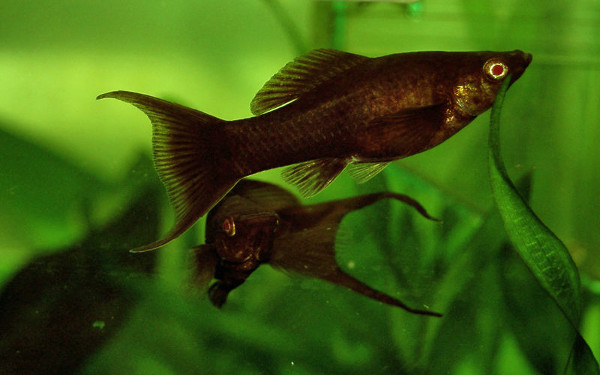
Setting up for livebearers
All livebearing fish are active and need room to swim. Guppies are suitable for tanks from 45cm upwards, Platies 60cm upwards and mollies and swordtails, 90cm upwards long term. Adult sailfin mollies can reach lengths of 10cm/4” or more, and male swordtails need long tanks for that long, sword-tail to fully develop.
Filtration doesn’t need to be strong and anything from an air-powered sponge filter to an internal canister filter will be fine. With powerful external filters there is a risk that fry may be sucked into the inlets.
Lighting can be bright and the temperature set to 26C for the above, apart from Variatus platies and Dwarf top minnows.
Mature the tank in the normal way with beneficial bacteria. Livebearers are hardy fish and can be some of the first additions within that six week set up period. But exposure to high levels of ammonia and nitrite should be avoided, just like with any fish.
Most livebearing fish prefer hard, alkaline water with a pH of 7.5-8.5. That’s at odds with soft water-loving fish like Discus, so test the pH of your tap water. If you live in a soft water area you may need to add pH buffer, or reconsider livebearers and opt for Tetras instead. If you live in a hard water area and don’t fancy Malawi cichlids, livebearers could be right for you.
Males and females
All livebearers are easy to sex. Males have a modified anal fin called a gonopodium, which is spiky in shape, versus the standard triangular anal fin of the females. Male guppies are more colourful than females, male swordtails have the sword, and male sailfin mollies have the enlarged dorsal fin.
Male livebearers live fast and die young. All they want to do in life is feed and breed, so they constantly harass the females that they are kept with. That means that to give the females a break, you should have two females to every male, or no females at all if you don’t want baby fish.
Many females are already pregnant when you buy them, and this can be seen when they develop a large belly and a dark patch near to that anal fin called the gravid spot.
Female swordtails are known for changing sex, so a fish bought as a female may develop a gonopodium and eventually a swordtail extension.
All livebearers live together in number in the wild, and although they don’t tightly shoal together like tetras or rasboras do, they appreciate their own kind and are usually best bought in sixes - two males and four females.
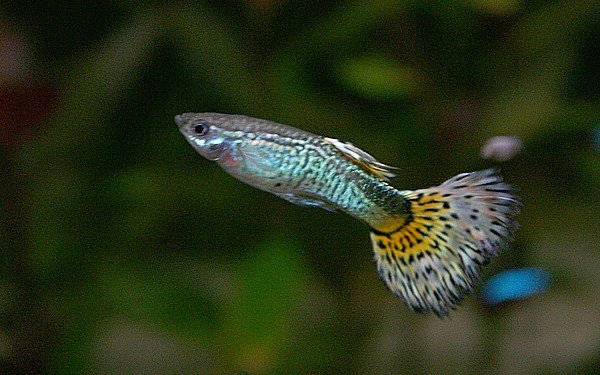
Breeding readiness
New fishkeepers are often surprised to find the appearance of baby fish in their tank one day. Although larger than most fry they are still tiny and vulnerable from being eaten by other fish in the tank as well as their own parents!
As soon as you purchase female guppies, platies, swordtails or mollies, prepare for the coming of fry. Get a breeding trap and when the female fish looks big enough to burst, put her in it. She will usually give birth within a few days. As soon as fry are spotted in the breeding trap and the female looks much slimmer, take her out and put her back in the main tank. Take the divider out of the breeding trap and feed the newborn fry several times a day on fry food, siphoning out any uneaten food using airline.
To safeguard against any unplanned births, plant the aquarium with lots of feathery leaved plants where the females can retire to, give birth, and the fry can hide amongst until you spot and remove them.
The best possible place for a pregnant female is in a tank of her own with lots of feathery plants. She will be less stressed, will give birth amongst the plants, and then returned to the main tank while the fry are raised in the extra space of the second tank. Feed livebearer fry on commercial fry foods, baby brineshrimp and crumbled flake.
When fry are almost the size of a neon tetra, or too large to be eaten by your other fish, they can be moved to the main tank.




